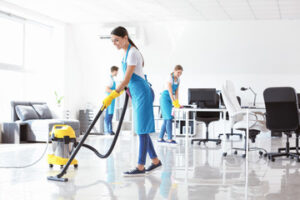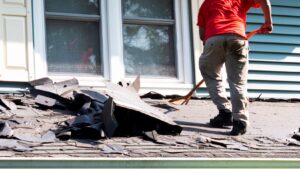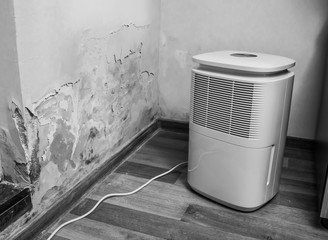Workshop Aziendale can be an important part of a team-building program. They can improve morale, foster collaboration, and increase productivity. They can also improve leadership abilities and encourage interpersonal interaction.

A workshop can help improve teamwork by removing the barriers to collaboration that can cause friction and low productivity. These obstacles can include groupthink, hidden or real hierarchies, and different working styles. However, simply running a workshop does not automatically equate to better results and higher productivity. To get the most value out of a workshop, you must carefully design the event.
The process of designing a workshop begins with understanding the desired outcomes and identifying the participants. Then you must develop a plan for the workshop that includes how each activity will contribute to these outcomes. In addition, you must consider the group size and manageability. It is important to keep the group size manageable in order to ensure that everyone has a chance to participate and make their voice heard.
You also need to determine if the workshop is going to be held in person or online. If it is in person, you can add a pre-workshop activity to help the participants prepare for the session. For example, you can send a video introduction of all the participants to get them acquainted with each other or create an online whiteboard where they can share their personal background and interests. You can also include a list of materials for participants to bring.
Lastly, you must set clear workshop goals and objectives that are specific to the problem. Ideally, these goals should be measurable and time-bound. This will allow you to evaluate the success of your workshop in terms of whether it has met its goals.
It is also essential to identify the level of knowledge required for each activity and the learning objectives for each participant. This will make it easier to design an engaging and interactive workshop for the participants.
The best way to do this is to use an LMS platform that allows you to customize content for each workshop participant. This will give you the flexibility to create a unique experience for each attendee, while also making it easy for participants to share the information with others in their organization.
Identifying Learning Objectives
Creating learning objectives is one of the most important aspects of developing an effective corporate workshop. These objectives clarify to employees what they are expected to achieve, and provide the framework for assessing their success. They also give the company an opportunity to identify gaps in training and focus resources to address them. Learning objectives should be brief, but still clearly articulate what is being taught. They should also be as specific as possible. This helps ensure that the objectives are understood and remembered by employees.
It is also important to consider the learners’ styles and learning methods when creating the learning objectives for a corporate workshop. Visual, spatial and creative people enjoy working with flip chart paper, coloured markers and post-it notes; they may prefer human interaction and activities such as role-plays, discussions, mutual interviews and group brainstorming sessions over more formal planning tools and techniques. Logical, numerate and process-oriented individuals and teams are happier with more structured planning tools and techniques such as spreadsheets, diagrams and timelines.
Another factor to consider when identifying learning objectives is how much time and effort the workshop will take to complete. This is often determined by the duration of the workshop, as well as the resourcing needs, such as space, trainers and the number of participants. It is also important to consider the impact that the workshop will have on the organization’s wider goals and objectives, such as how it supports the corporate mission or vision.
It’s also important to consider the level of skill and knowledge that will be required for the employees to successfully complete a corporate workshop. This is typically measured using a standard model, such as Bloom’s Taxonomy, although some businesses use the SMART formula. To determine the level of competence that is required for a particular learning objective, you may want to survey and assess your employees ahead of time.
Once you’ve decided on the goals and objectives for a corporate workshop, it’s important to write them down. This will help to make them clearer for both employees and managers. It’s also a good idea to include a realistic timeframe for achieving the learning objective and how it will be evaluated.
Creating a Schedule
Creating and updating schedules takes time, even with the best tools. When there are multiple people involved in a project, a shared calendar is an essential tool for communicating changes and keeping track of progress.
Providing an accurate and clear event schedule is vital for any successful workshop. A clear and organized plan helps participants understand what is expected of them, how long the workshop will last and when they should be expecting a break or the end of the workshop. An effective workshop schedule also ensures that all the components of the event are working together, resulting in an overall positive experience for everyone involved.
An effective workshop schedule is also important for the organizers, as it allows them to track progress and identify any issues before they become serious problems. It is also a great way to manage the expectations of both the participants and stakeholders.
To create an effective workshop schedule, it is important to remember that the workshop should be a learning experience. This means that the participants should be engaged in the sessions and should be encouraged to participate in discussions. Additionally, the participants should be given breaks throughout the day to keep their energy levels up and prevent them from losing focus.
Finally, it is important to make the workshops as accessible as possible for the participants. This includes making them available online or in person. Additionally, it is a good idea to include post-workshop activities such as sending resources to the attendees or asking them for feedback through a questionnaire.
Another important factor to consider is the date of the workshop. It is recommended to avoid scheduling workshops on Mondays, as these are usually the days when many people travel or work from home. In addition, if the workshop requires facilitators to attend, it is important to allow them enough time to get there and start the day, since they will likely have a lot of other responsibilities to attend to.
Managing Expectations
In a team-based workplace, managing expectations involves aligning and communicating goals, deadlines, and performance standards between managers and employees. This process requires a commitment to open communication and a willingness to adapt personal expectations to align with the reality of what can be achieved within a given timeframe. In addition, it includes identifying and addressing any conflicting or unrealistic expectations among various stakeholder groups to promote a high-performance work culture.
Unrealistic expectations can put undue stress on employees, especially if they are not addressed quickly and thoroughly. These expectations may stem from social pressures, comparisons, or idealized notions of success. Over time, these inflated expectations can lead to frustration and diminished employee efficacy. In some cases, they may even cause workers to feel discouraged from working on challenging tasks or projects.
To prevent unrealistic expectations, a manager must clearly define goals, roles, and responsibilities and communicate these to the team. This clarity prevents misunderstandings and enhances the team’s productivity. To do this, the manager must document plans and deliverables in accessible and straightforward language. He or she should also ask team members to repeat these expectations back to them in their own words to ensure understanding.
In addition to documenting, managers should use formal project management processes and timelines to manage expectations. These tools can help teams understand how they will be measured, what will and won’t be accomplished, and how long the project will take. This helps to minimize misunderstandings, delays, and disappointments.
Managing expectations is an ongoing process. Managers should continually assess and manage team performance, provide positive feedback when it is warranted, and address negative or inconsistent performances as needed. They should also be willing to adapt expectations based on changing circumstances or new information.
To do this, a manager should regularly check in with their team and discuss progress on current projects. This will allow the manager to identify any potential issues before they become major problems and encourage the team to perform at its best. Additionally, the manager should make time to meet with individual employees. These 1-2-1 meetings can be a great way to manage expectations by discussing individual strengths, weaknesses, and opportunities for growth.



